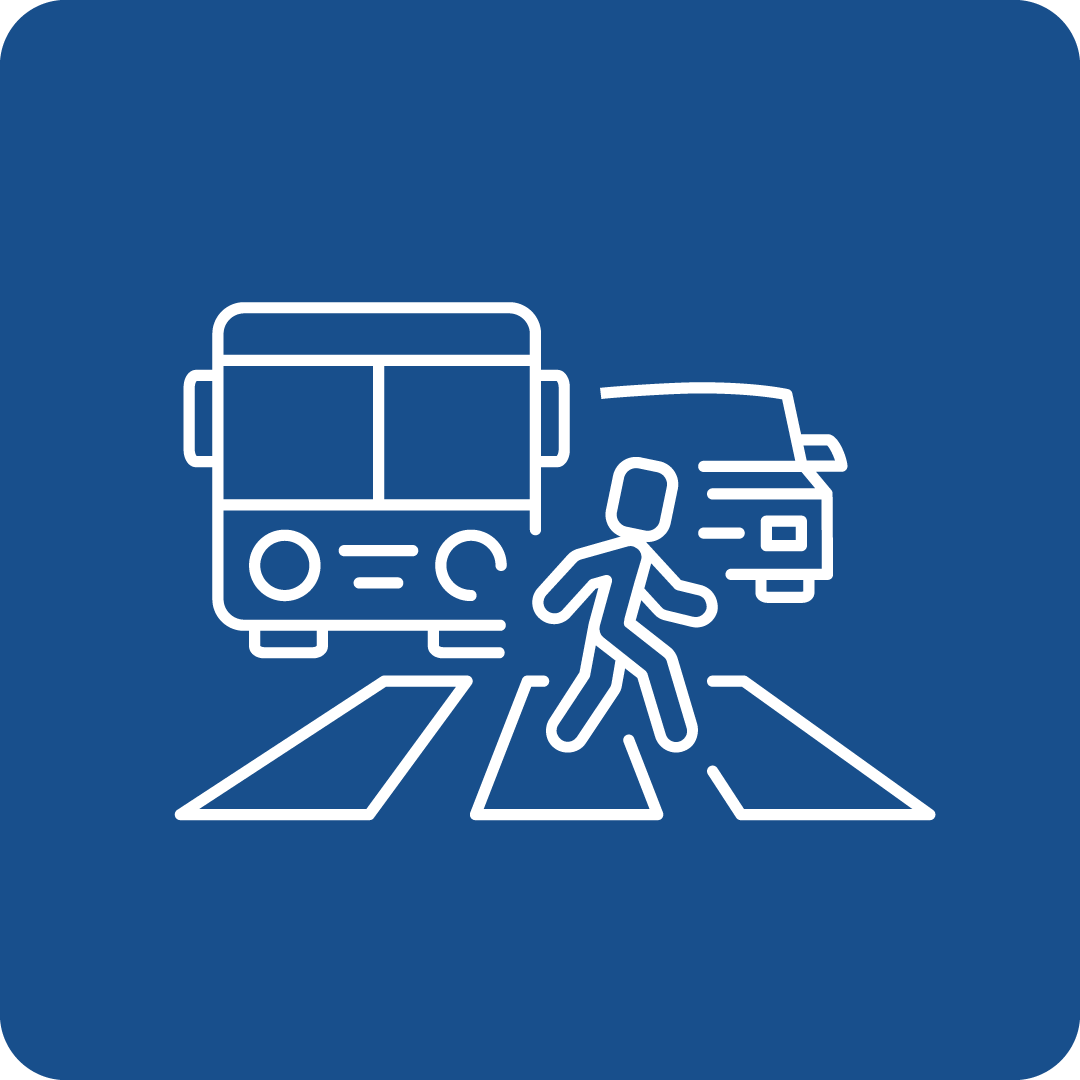Filter Search for grants
Call Navigation
Deadline expired
The deadline for this call has expired.
Call key data
A new framework to improve traffic safety culture in the EU
Funding Program
Horizon Europe: Cluster 5 - Climate, Energy and Mobility
Call number
HORIZON-CL5-2024-D6-01-12
deadlines
Opening
07.05.2024
Deadline
05.09.2024 17:00
Funding rate
100%
Call budget
€ 7,000,000.00
Estimated EU contribution per project
€ 3,500,000.00
Link to the call
Link to the submission
Call content
short description
Actions should contribute to establishing a framework for cultural transformation in road safety across the EU.
Call objectives
A Safe System entails the understanding and managing of all elements of the transport system, including the behaviour and interplay of its actors. Comparative analysis shows persistent differences in road safety performances between EU Member States/Associated countries. These differences may be attributable to differences in culture, which are hard to explain with classical risk models. Efforts should therefore be made to complement road safety initiatives by a safety culture perspective, i.e., the values, beliefs, priorities and viewpoints shared among groups of road users and stakeholders that influence their decisions to behave or act in ways that affect safety, while also considering energy consumption. This concept is already well established in organisational research.
Assessing road safety cultures in different national, regional or local systems, groups and organisations is believed to help understanding and explaining different patterns of risk perception and risk taking across communities and countries – and can likewise inform tailored interventions for these (sub-)cultures, which all come with their specific norms, values, beliefs and behaviours (including gender-related behavioural patterns). These interventions should address all relevant actors in the system for road transport of people and goods, and consider future developments, such as potential impacts by increasing automation levels or by the introduction of new means of road transport such as e-scooters and hoverboards.
Within this context, actions should contribute to establishing a framework for cultural transformation in road safety across the EU and thereby address all the following aspects:
- Better understanding of the link between road safety outcomes and safety culture, i.e. of sociocultural factors like values, beliefs, attitudes, and norms and their effects on actual behaviour of road users (including subjective perception of safety as well as implications of value of time and institutionalised travel costs) – and the ways how these factors can be sustainably transformed.
- Consideration in particular - but not exclusively - of traffic behaviour with high safety impacts, such as inadequate speed choice, distraction by communication or control devices, driving or riding under the influence of alcohol or drugs, non-use of protective devices, and risks triggered by professional drivers’ requirements to multitask and report while driving.
- Assessment of safety cultures and respective activities from other transport modes such as aviation and rail and their potential for road safety.
- Assessment of the interplay between shifting to more energy efficient mobility solutions and traffic safety.
- Consideration of safety impacts of new technologies (including better understanding and use of Advanced Driver Assistance Systems (ADAS)) and emerging transport means and services.
- Consideration of the safety impact of the increasing penetration of urban micro-mobility systems in mixed traffic scenarios and evaluation of potential safety improvements for the protection of micro-mobility users.
- Stocktaking of good practices from countries and companies worldwide already successfully applying cultural approaches to (road) safety work, including countries outside of the EU such as the US and Australia.
- Targeting all levels of the socio-economic systems of societies in the EU, i.e. from European to national, regional and local communities, including entities such as schools and workplaces. Also, NGOs, victims’ organisations etc. can play an important role in that regard.
- Clear guidance & hands-on advice on the design and evaluation of interventions to define, measure, transform and institutionalise traffic safety culture across all areas affecting road safety – for decision-makers and practitioners, with a good geographic coverage across EU institutions, EU Member States/Associated countries. At the level of individual road users, including VRUs, such interventions may entail targeted educational and communication efforts to challenge wrong beliefs or to clarify misperceived social norms, and the use of incentives and nudging to encourage compliant behaviour. At the level of enterprises and authorities, initiatives may include the take-up of safety culture principles in sustainability reporting and encompass various activities from staff training and supervision to procurement and operations – at best permeating work culture and norms of an organisation. Advice at the level of EU Member States/Associated countries and the EU is sought on how to support such transformation such as with legislation, enforcement, and data.
- At least three different pilot tests of selected interventions at various levels in different EU Member States/Associated countries.
Actions should be based on the results of previous research projects in this domain, such as the TraSaCu project, and make advances by completing and updating their theoretical foundations, teaming up with EU stakeholders and bringing their findings to life by establishing a framework for true cultural transformation in road safety both among stakeholders and road users. Making use of data that is already being collected in EU Member States/Associated countries about traffic safety culture such as the ESRA initiative (which already involves 60 countries, including over 20 European ones) and Baseline project is strongly encouraged.
Special attention should be given to EU countries with lower safety performance. Integration of relevant expertise from social sciences and humanities (SSH) and international cooperation with partners from the US and/or Australia is encouraged.
read more
Expected results
Research results are expected to contribute to all the following outcomes:
- Growing a positive traffic safety culture across the EU that supports the Vision Zero goal and the Safe System Approach, and which is in line with the UN Sustainable Development Goals and the 2020 Stockholm Declaration, UN General Assembly Resolution and Global Plan of Action for the second decade on road safety
- Remedial action against detrimental, non-temporary impacts of the COVID-19 pandemic on certain road safety risk factors such as a shift from collective to individual means of transport. Facilitation of a shift to increase efficiency in road safety related public spending across Europe together with a shift towards more energy efficient mobility choices.
- Development and evaluation of strategies to transform the traffic safety culture of road users and stakeholders based on a valid model that identifies the key components defining traffic safety culture, including, for example, social norms, attitudes, perceived control, values, and system assumptions (including its energy efficiency and consumption)
- Concepts and guidelines to make the concept of traffic safety culture an integral part of road safety work of actors across the socio-economic systems of European societies
- Better understanding of the link between road safety outcomes and safety culture; pilot implementation of road safety education at secondary school level and also for decision makers and practitioners in EU Member States/Associated countries.
read more
Eligibility Criteria
Regions / countries for funding
Moldova (Moldova), Albania (Shqipëria), Armenia (Հայաստան), Azerbaijan (Azərbaycan), Belarus (Беларусь), Bosnia and Herzegovina (Bosna i Hercegovina / Босна и Херцеговина), Faeroes (Føroyar / Færøerne), Georgia (საქართველო), Iceland (Ísland), Israel (ישראל / إِسْرَائِيل), Kosovo (Kosova/Kosovë / Косово), Montenegro (Црна Гора), Morocco (المغرب), New Zealand (Aotearoa), North Macedonia (Северна Македонија), Norway (Norge), Serbia (Srbija/Сpбија), Tunisia (تونس /Tūnis), Türkiye, Ukraine (Україна), United Kingdom
eligible entities
Education and training institution, International organization, Non-Profit Organisation (NPO) / Non-Governmental Organisation (NGO), Other, Private institution, incl. private company (private for profit), Public Body (national, regional and local; incl. EGTCs), Research Institution incl. University, Small and medium-sized enterprise (SME)
Mandatory partnership
Yes
Project Partnership
To be eligible for funding, applicants must be established in one of the following countries:
- the Member States of the European Union, including their outermost regions
- the Overseas Countries and Territories (OCTs) linked to the Member States
- third countries associated to Horizon Europe - see list of particpating countries
Only legal entities forming a consortium are eligible to participate in actions provided that the consortium includes, as beneficiaries, three legal entities independent from each other and each established in a different country as follows:
- at least one independent legal entity established in a Member State; and
- at least two other independent legal entities, each established in different Member States or Associated Countries.
Any legal entity, regardless of its place of establishment, including legal entities from non-associated third countries or international organisations (including international European research organisations) is eligible to participate (whether it is eligible for funding or not), provided that the conditions laid down in the Horizon Europe Regulation have been met, along with any other conditions laid down in the specific call topic.
A ‘legal entity’ means any natural or legal person created and recognised as such under national law, EU law or international law, which has legal personality and which may, acting in its own name, exercise rights and be subject to obligations, or an entity without legal personality.
Specific cases:
- Affiliated entities — Affiliated entities (i.e. entities with a legal or capital link to a beneficiary which participate in the action with similar rights and obligations to the beneficiaries, but which do not sign the grant agreement and therefore do not become beneficiaries themselves) are allowed, if they are eligible for participation and funding.
- Associated partners — Associated partners (i.e. entities which participate in the action without signing the grant agreement, and without the right to charge costs or claim contributions) are allowed, subject to any conditions regarding associated partners set out in the specific call conditions.
- Entities without legal personality — Entities which do not have legal personality under their national law may exceptionally participate, provided that their representatives have the capacity to undertake legal obligations on their behalf, and offer guarantees to protect the EU’s financial interests equivalent to those offered by legal persons.
- EU bodies — Legal entities created under EU law including decentralised agencies may be part of the consortium, unless provided for otherwise in their basic act.
- Joint Research Centre (‘JRC’)— Where provided for in the specific call conditions, applicants may include in their proposals the possible contribution of the JRC but the JRC will not participate in the preparation and submission of the proposal. Applicants will indicate the contribution that the JRC could bring to the project based on the scope of the topic text. After the evaluation process, the JRC and the consortium selected for funding may come to an agreement on the specific terms of the participation of the JRC. If an agreement is found, the JRC may accede to the grant agreement as beneficiary requesting zero funding or participate as an associated partner, and would accede to the consortium as a member.
- Associations and interest groupings — Entities composed of members (e.g. European research infrastructure consortia (ERICs)) may participate as ‘sole beneficiaries’ or ‘beneficiaries without legal personality’. However, if the action is in practice implemented by the individual members, those members should also participate (either as beneficiaries or as affiliated entities, otherwise their costs will NOT be eligible.
other eligibility criteria
Eligible costs will take the form of a lump sum.
If projects use satellite-based earth observation, positioning, navigation and/or related timing data and services, beneficiaries must make use of Copernicus and/or Galileo/EGNOS (other data and services may additionally be used).
Additional information
Topics
Relevance for EU Macro-Region
EUSAIR - EU Strategy for the Adriatic and Ionian Region, EUSALP - EU Strategy for the Alpine Space, EUSBSR - EU Strategy for the Baltic Sea Region, EUSDR - EU Strategy for the Danube Region
UN Sustainable Development Goals (UN-SDGs)
![]()
Additional Information
All proposals must be submitted electronically via the Funders & Tenders Portal electronic submission system (accessible via the topic page in the Search Funding & Tenders section). Paper submissions are NOT possible.
Proposals must be complete and contain all parts and mandatory annexes and supporting documents, e.g. plan for the exploitation and dissemination of the results including communication activities, etc.
The application form will have two parts:
- Part A (to be filled in directly online) contains administrative information about the applicant organisations (future coordinator and beneficiaries and affiliated entities), the summarised budget for the proposal and call-specific questions;
- Part B (to be downloaded from the Portal submission system, completed and then assembled and re-uploaded as a PDF in the system) contains the technical description of the project.
Annexes and supporting documents will be directly available in the submission system and must be uploaded as PDF files (or other formats allowed by the system).
The limit for a full application (Part B) is 50 pages.
Contact
To see more information about this call, you can register for free here
or log in with an existing account.
Log in
Register now


